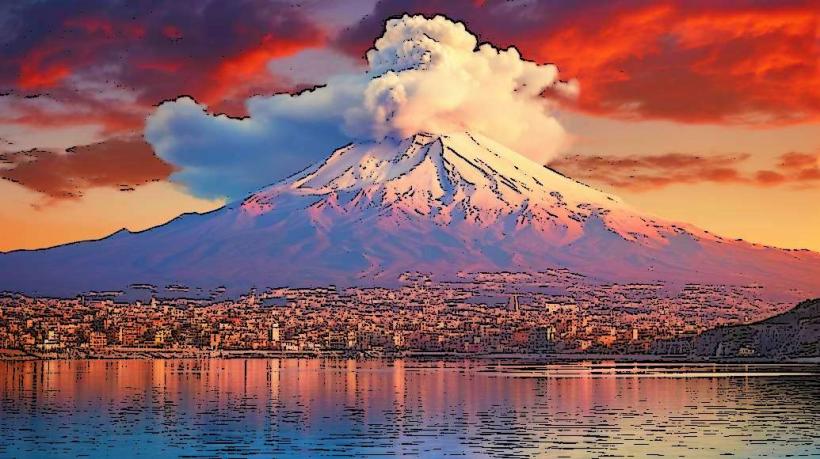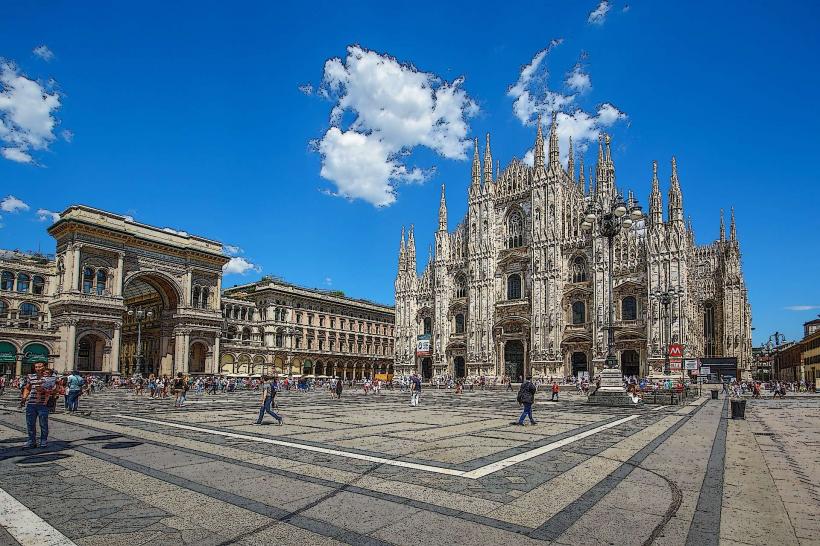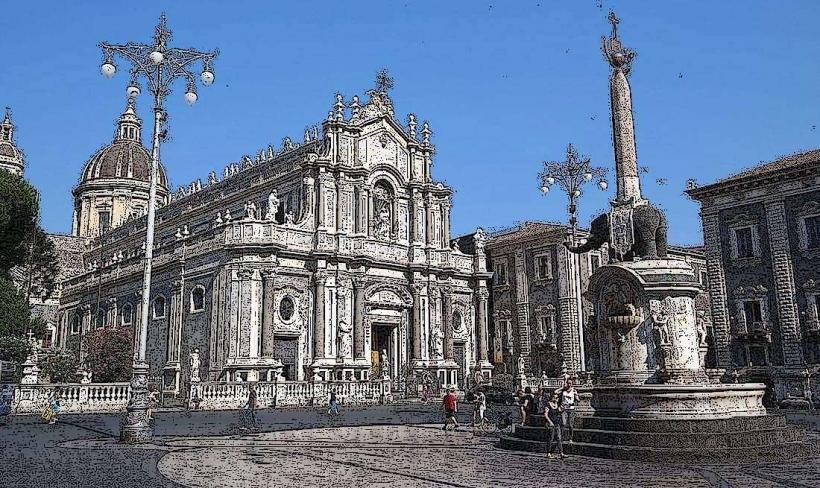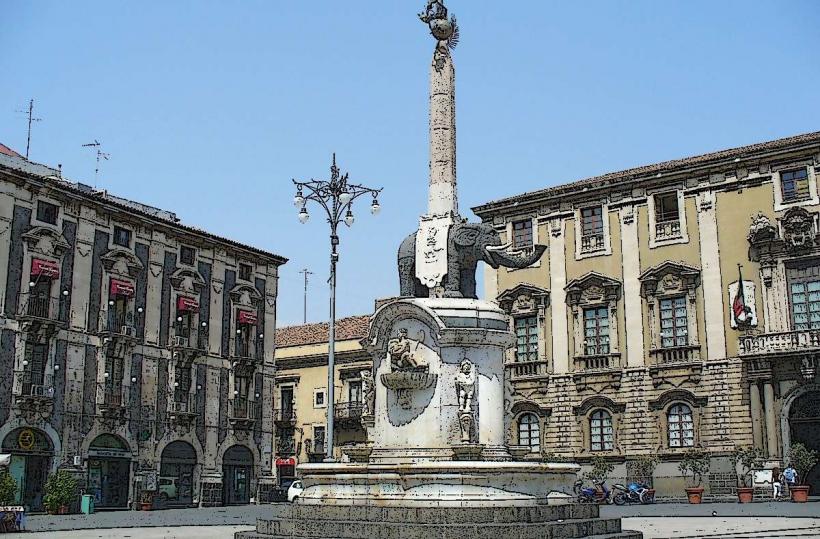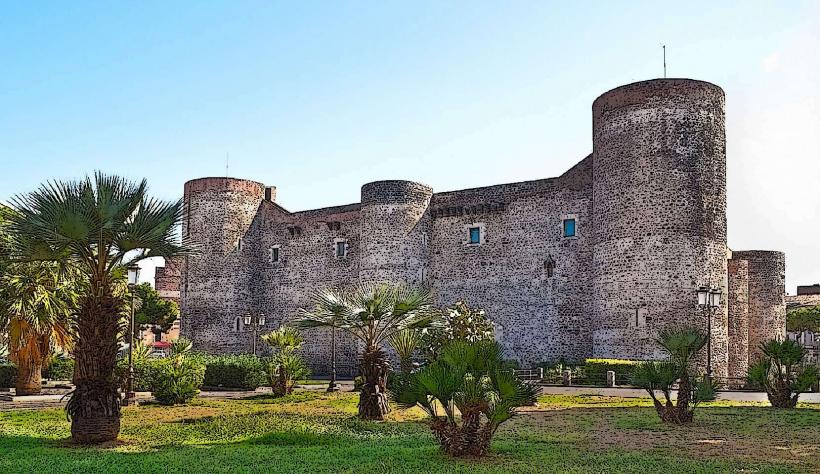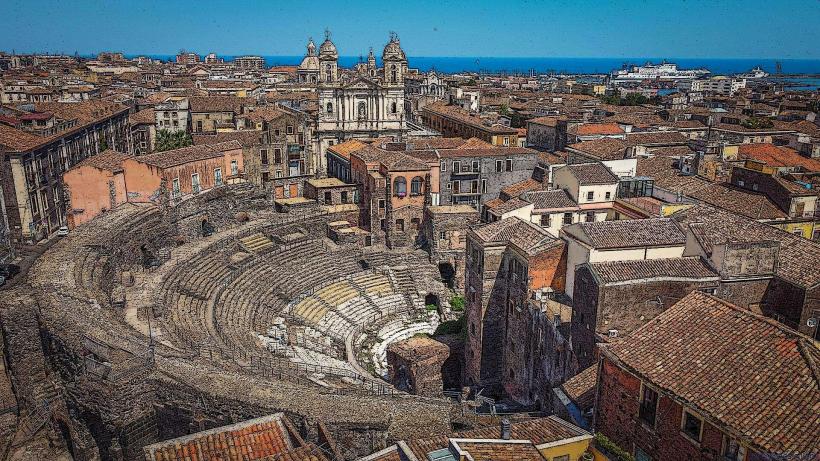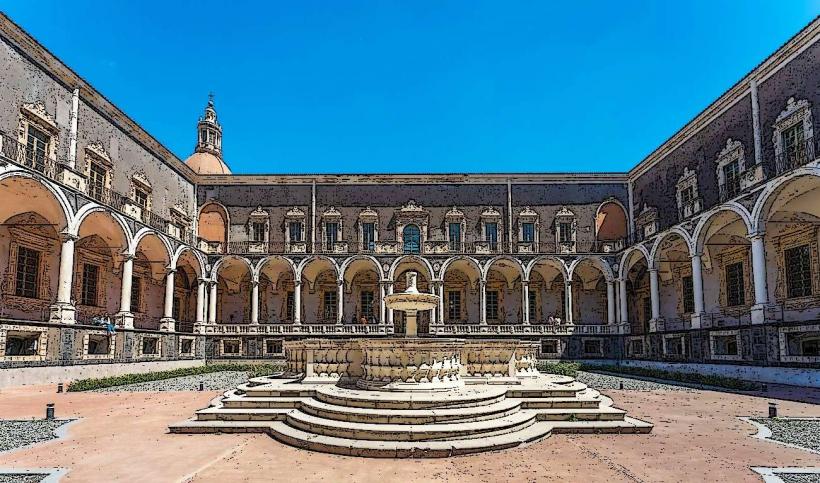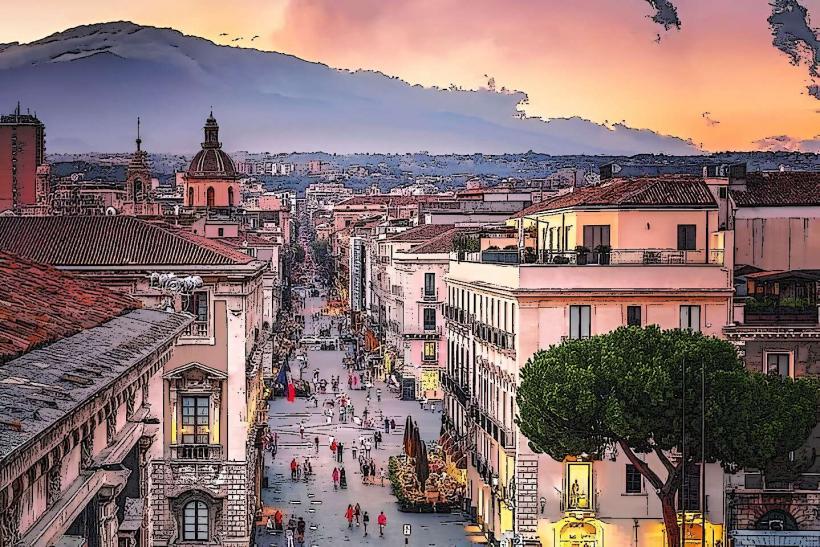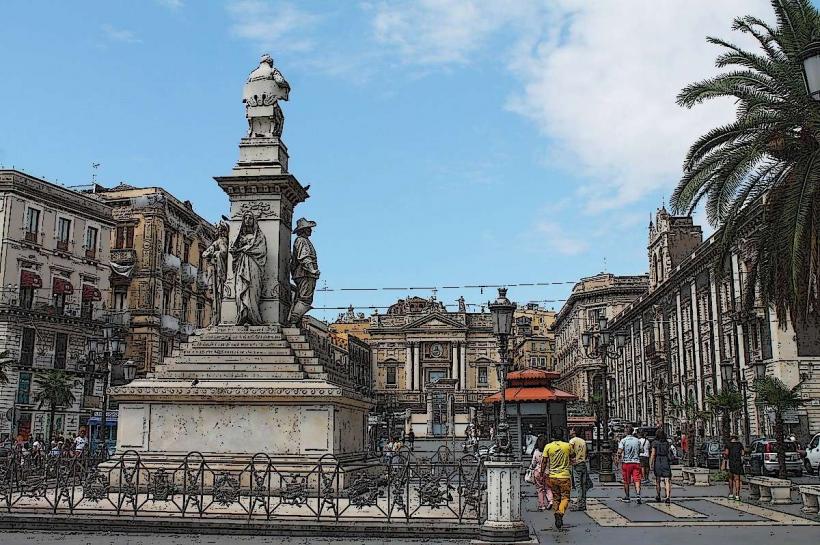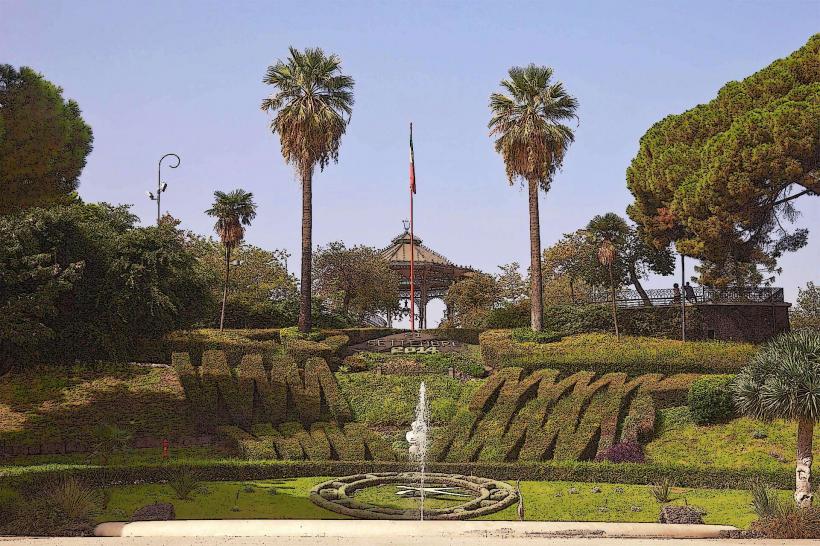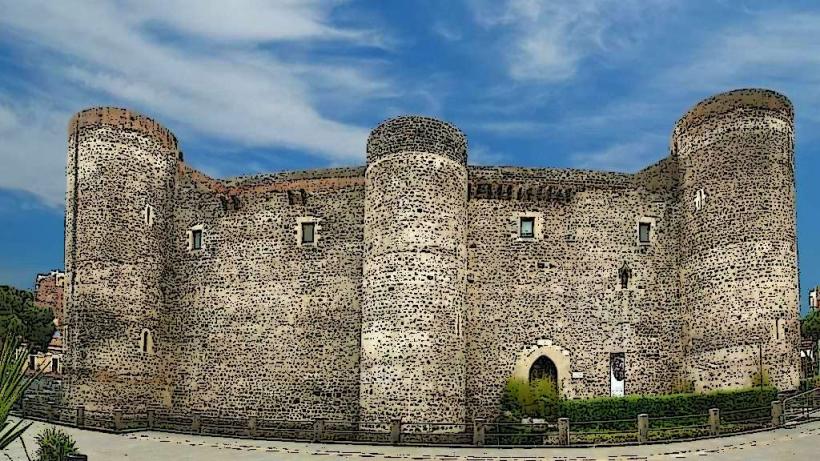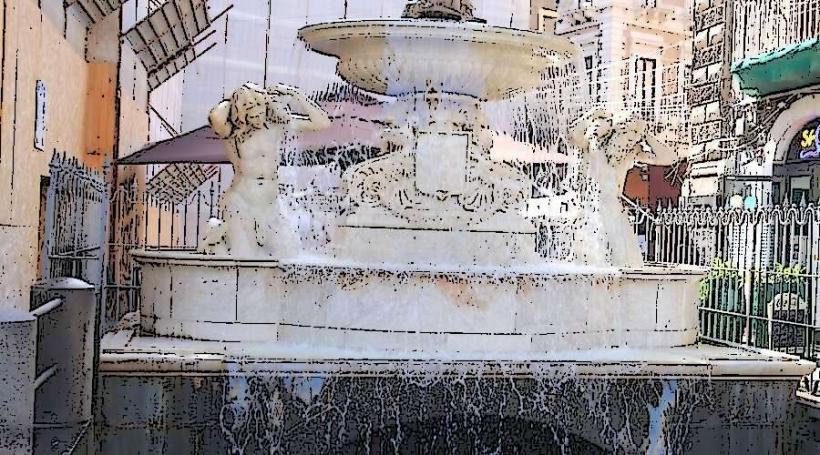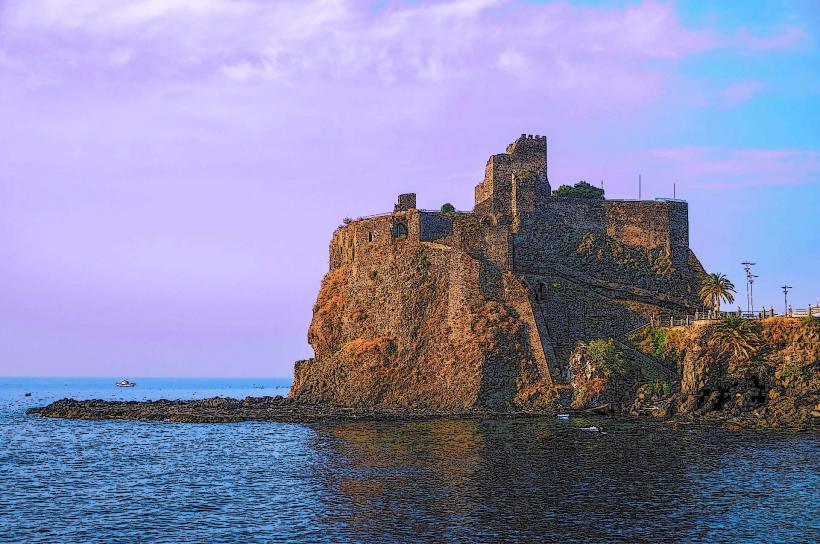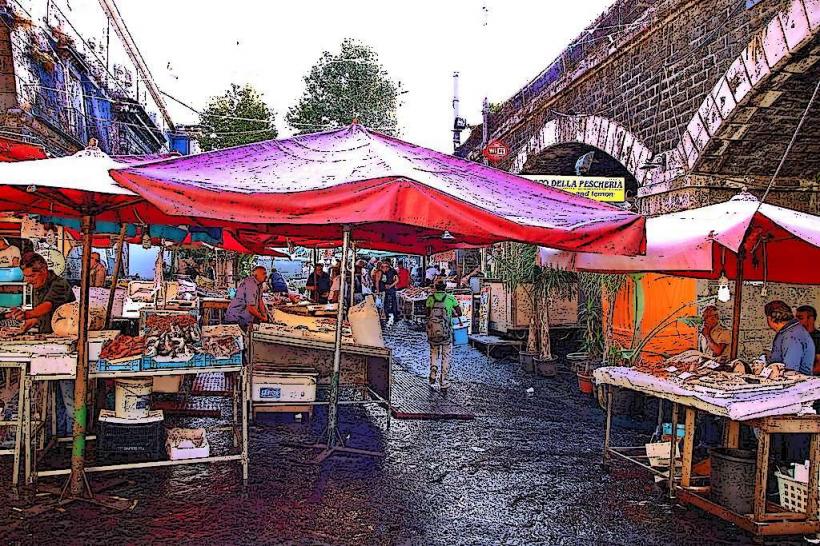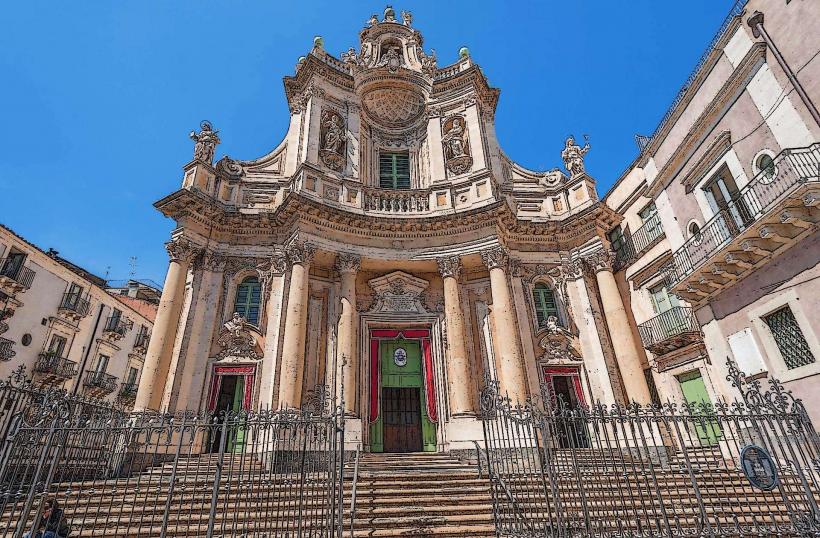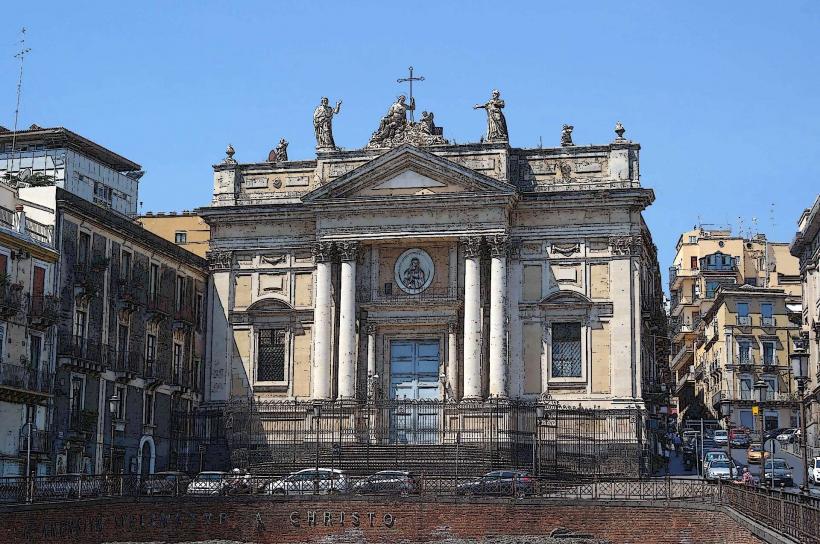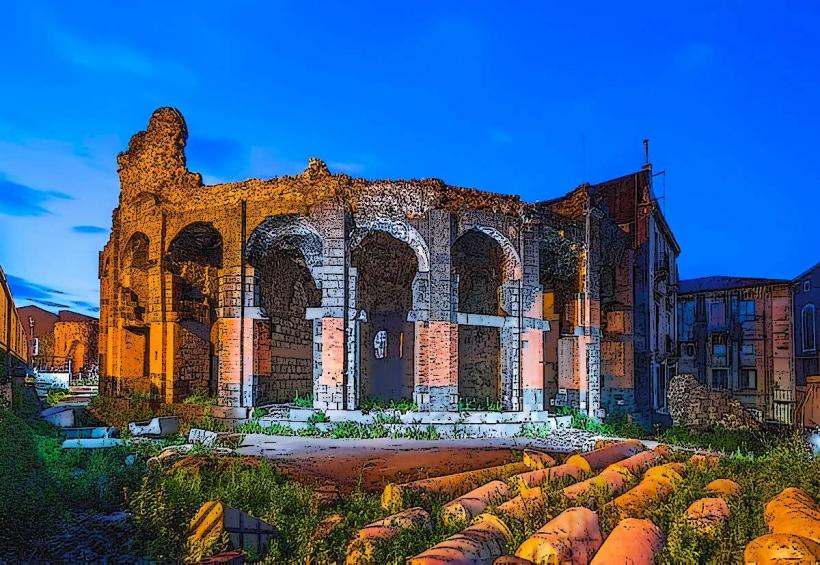Information
City: CataniaCountry: Italy
Continent: Europe
Catania is a historic city located on the eastern coast of Sicily, Italy, at the foot of Mount Etna, Europe’s most active volcano. With a rich history dating back to ancient times, Catania is a city that combines ancient ruins, Baroque architecture, and natural beauty. Here's a detailed overview of Catania:
1. Historical Overview
- Ancient Catania: Catania's origins trace back to the ancient Greeks, who founded the city in the 8th century BCE. The Greeks named it Katane, and it became an important trading port. Over the centuries, Catania was ruled by various civilizations, including the Romans, Byzantines, Arabs, and Normans, each of whom left their mark on the city's culture and architecture.
- Eruption of Mount Etna: Catania has faced numerous volcanic eruptions from Mount Etna, which have shaped the city's landscape. The most destructive eruption occurred in 1693, which led to the reconstruction of much of the city in the Baroque style. This event is a significant chapter in Catania’s history and has contributed to its distinctive appearance.
2. Geography and Climate
- Location: Catania lies along the eastern coast of Sicily, between the Ionian Sea and the towering slopes of Mount Etna, which is about 25 km (15 miles) away. The city's proximity to the volcano has shaped both its culture and economy.
- Climate: Catania enjoys a Mediterranean climate, characterized by hot, dry summers and mild, wet winters. Due to its coastal location, it has pleasant temperatures year-round, making it a popular destination for visitors.
3. Major Landmarks
- Piazza del Duomo: The Piazza del Duomo is the heart of Catania and features the Catania Cathedral (Cattedrale di Sant'Agata), dedicated to the city’s patron saint, Saint Agatha. The piazza is also home to the Elephant Fountain (Fontana dell'Elefante), a symbol of the city, featuring a carved elephant made of lava stone from Mount Etna.
- Catania Cathedral (Cattedrale di Sant'Agata): The cathedral is a stunning example of Sicilian Baroque architecture, built over the ruins of an ancient Roman temple. It houses the relics of Saint Agatha, the city's patron saint, and is one of Catania's most significant religious sites.
- Via Etnea: This wide, tree-lined avenue runs through the center of Catania, from Piazza del Duomo to the base of Mount Etna. It is the city's main shopping street, with many historic buildings, including palaces and churches.
- Castello Ursino: Built in the 13th century by Frederick II of Sicily, this medieval castle now houses the Catania Civic Museum. The castle is one of the few remaining structures from the Norman period and offers fantastic views of the city.
- Teatro Romano: The Roman Theater in Catania dates back to the 2nd century AD and could once hold about 15,000 spectators. It’s a fascinating example of Roman engineering, partially excavated and partially integrated into the surrounding city.
- Benedictine Monastery of San Nicolò l'Arena: This vast monastery complex is one of the largest in Europe and is another fine example of Baroque architecture. It is also part of the University of Catania.
4. Cultural Significance
- Patron Saint Agatha: Catania is deeply connected to the cult of Saint Agatha, whose feast day, February 5, is celebrated with a grand procession through the streets of the city. The annual festival is a highlight of the city’s religious and cultural calendar.
- Sicilian Baroque Architecture: Catania is renowned for its Baroque architecture, particularly following the devastating earthquake of 1693. The city’s Baroque style includes ornate facades, grand palaces, churches, and fountains, which were rebuilt after the earthquake. Many of these buildings are now part of the UNESCO World Heritage sites.
- Mount Etna: The active presence of Mount Etna has had a profound impact on Catania’s culture, from the fertile volcanic soil that supports agriculture to the threats posed by eruptions. The mountain is a popular attraction for tourists and offers opportunities for hiking, skiing, and viewing volcanic activity.
5. Modern Catania
- Economy: Modern Catania is an important commercial and industrial center. It is a hub for the production of agricultural goods, particularly citrus fruits, olives, and almonds. The port of Catania is crucial for trade, and the city also has a growing tourism industry, thanks to its rich history and proximity to Mount Etna.
- Universities and Education: Catania University (Università degli Studi di Catania) is one of the oldest and most respected universities in Italy, offering a range of programs and contributing significantly to the city’s cultural and intellectual life.
- Cuisine: Catania’s cuisine is a mix of Sicilian and Mediterranean influences, with an emphasis on fresh, local ingredients. Dishes such as arancini (fried rice balls), pasta alla Norma (pasta with eggplant, ricotta salata, and tomato), and granita (a semi-frozen dessert) are popular local specialties. Catania is also known for its fish and seafood, often caught fresh from the Ionian Sea.
6. Festivals and Events
- Feast of Saint Agatha: The most important event in Catania’s calendar is the Feast of Saint Agatha, held every February 5-7. The festival features a religious procession, fireworks, and various events celebrating the city’s patron saint.
- Mount Etna Festival: In the summer, Catania hosts various cultural events, including music festivals and performances that take place against the backdrop of Mount Etna.
- Catania Jazz Festival: A popular event that attracts jazz lovers from around the world, this festival features performances by international and local jazz musicians.
7. Tourism and Attractions
- Mount Etna: A visit to Mount Etna is a must for anyone visiting Catania. Visitors can hike or take cable cars and off-road vehicles to explore the volcano’s craters and lava fields.
- The Fish Market (La Pescheria): Located near Piazza del Duomo, this historic fish market is a bustling area where locals sell fresh seafood and fish, providing an authentic Sicilian experience.
- Botanical Garden: The Botanical Garden of Catania is a peaceful space for nature lovers and provides a great way to learn about the native flora of Sicily.
8. Conclusion
Catania is a vibrant city that blends ancient history, Baroque splendor, and the looming presence of Mount Etna. Whether you’re exploring its ancient ruins, marveling at its Baroque architecture, or enjoying its delicious Sicilian cuisine, Catania offers something for every traveler. With its mix of cultural richness and natural beauty, Catania is a must-visit destination in Sicily.

